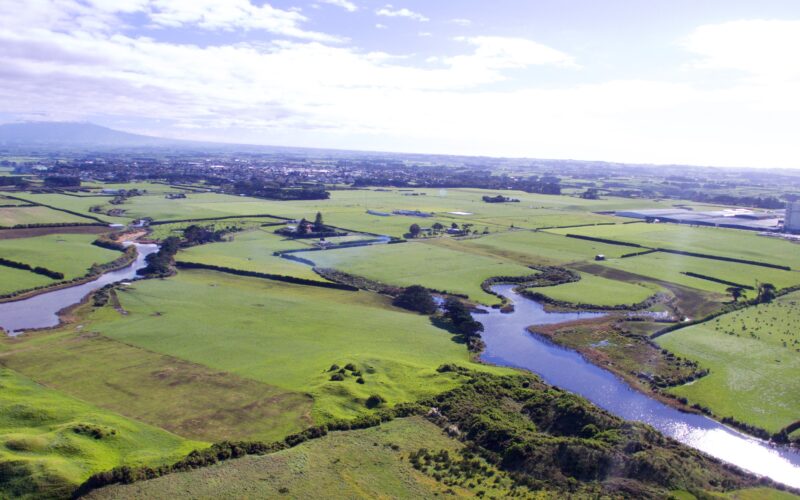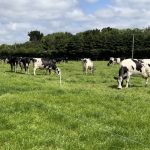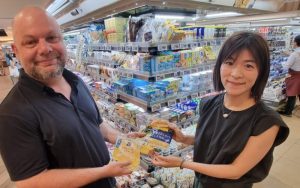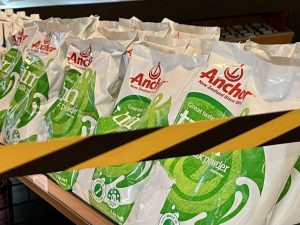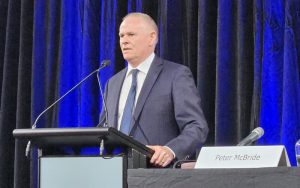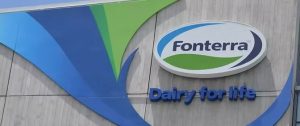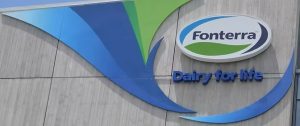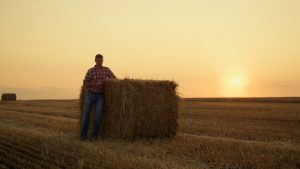
Pilot farm adjusts milking systems, tech, stocking rates and more as it sets out to prove it can be done.
Fonterra’s zero carbon farm is up and running for its first season of production.
The 271 hectare (210ha effective) is part of the Dairy Trust Taranaki farm group and was an existing research farm.
As a result of the Fonterra-Nestlé partnership it has taken on the challenge of trying to reach zero carbon, Fonterra’s director of sustainability Charlotte Rutherford said.
Moving from being a research farm to being a pilot farm has seen changes in terms of stocking rates and calving dates, with it shifting to spring calving from an autumn calving.
It has also returned to twice-a-day milking, having previously operated as a “10 in 7” farm.
“We have had 18 months of that being in place and a lot of that 18 months has been setting up the farm system and driving efficiencies within that new farm system that we see and build off into the future.
“There’s been those shifts, which are quite fundamental in a farm system but arguably a more common farm system that we see.”
Rutherford said there has been a reduction in the farm’s intensity and a lot of that was due to pasture management where matching feed to cow requirements has been critical.
The farm has also reduced brought-in feed and will attempt to better utilise the home-grown maize silage as well.
“That also means optimising nitrogen use and applications as well. There’s been a real shift to improved pasture management and matching that to cow requirement to be able to reduce that emissions intensity.”
This is an area of focus because it is seen as something other farmers could incorporate on their own farms to reduce their emissions, she said.
The farm uses FarmIQ as the primary management and monitoring tool as well as Hawkeye for fertiliser use and Halter for grazing management and heat detection, and the farm is also a calibration farm for LIC’s SPACE pasture monitoring programme.
SmaXtec Boluses were installed for this season for heat and health alerts, with Halter still in use for the virtual fencing.

Data is supplied to AgResearch, which runs the inputs through its Ag: LCA – a lifecycle assessment model of GHG emissions. This considers all the inputs required to produce a kilogram of milk solids.
The farm will also use electric farm bikes, and an electric ute is in use. Solar panels are being installed later this year.
The farm’s initial target is for a 30% reduction by 2027.
There is also consideration for what technological mitigation options may or may not be available in the future once all of the known on-farm options have been used to reach that net-zero target.
Offsetting is not being considered because the farm’s focus is based on using the resources within the farm system.
Rutherford said the farm sits somewhere between being a research farm and a commercial farm.
“Farmers have to see it as something they can implement and do themselves and it’s not an R&D farm.”
The farm runs 525 cows and is managed by Tracey Mills, who is supported by a herd manager and two farm assistants.
Above that sits a management group and above the management group is a governance group with representatives from Nestlé and Fonterra.
Improved breeding and reproduction has also been a focus, with the farm working with ex-LIC general manager for NZ markets, Malcolm Ellis.
The herd was inseminated earlier this year for spring calving starting on July 2.
Sexed semen is used for the first three weeks of mating to the top 50% of BW/PW cows in the herd. Beef semen is used for the remainder of cows.
It runs on a System 2 low intensive system. Over winter, all cows are kept on and fed supplementary silage, hay and maize.
Both chemical fertiliser and nitrogen are used. Effluent is spread to land either using the effluent drill system that can apply effluent across the entire milking platform, or it can be applied using the existing effluent irrigation system across 55ha on the platform.
The drill was applied twice during the season in good conditions to increase pond storage levels.
Staff are also testing whether an Ecopond, an effluent treatment created by Ravensdown, could be used for its effluent system to further reduce emissions.
You can now read the most important #news on #eDairyNews #Whatsapp channels!!!
🇺🇸 eDairy News INGLÊS: https://whatsapp.com/channel/0029VaKsjzGDTkJyIN6hcP1K
